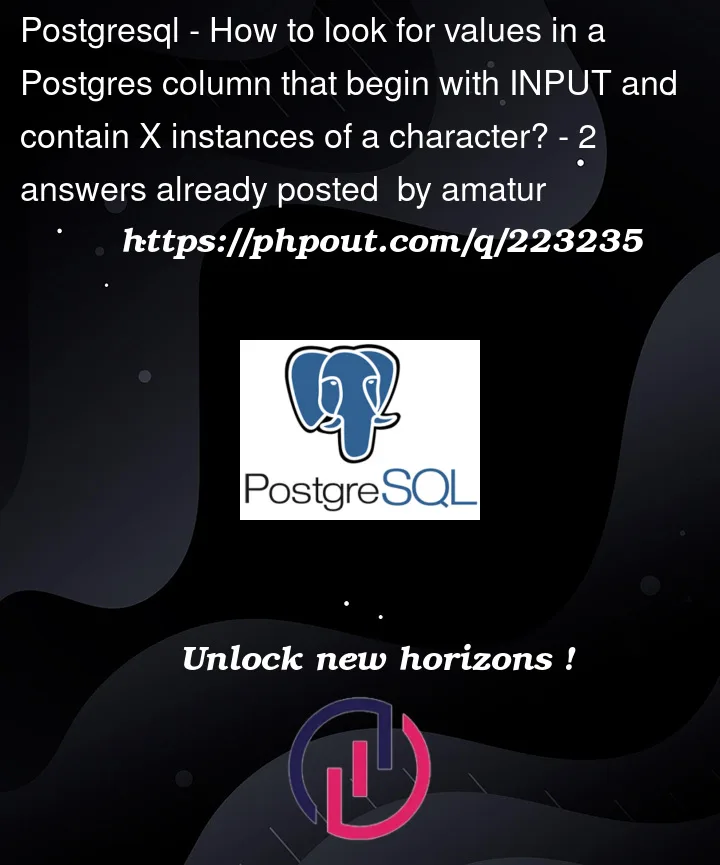I have a COLUMN in a Postgres table which has values with the following pattern.
INPUT-X
INPUT-X-Y
INPUT-X-Y-Z
INPUT-X-Y-Z-A-...
I am trying to count the number of entries in COLUMN where the value begins with INPUT and contains a given number of hyphens. So if the input value is 2023-08-04T09:00:32.822+00:00, I want to count all of the entries in COLUMN which begin with 2023-08-04T09:00:32.822+00:00 and contain 3 hyphens. If values in COLUMN include:
2023-08-04T09:00:32.822+00:00-1
2023-08-04T09:00:32.822+00:00-1-1
2023-08-04T09:00:32.822+00:00-2
2023-08-04T09:00:32.822+00:00-2-1
2023-08-04T09:00:32.822+00:00-3
2023-08-04T09:00:32.822+00:00-4
The count of this operation should equal 4. (The purpose of this is to calculate the index for the next value of the series, which in this case would be 2023-08-04T09:00:32.822+00:00-5. Each of the values are a reference to a parent entry e.g. 2023-08-04T09:00:32.822+00:00-5 signifies the 5th reply to entry 2023-08-04T09:00:32.822+00:00. Likewise, 2023-08-04T09:00:32.822+00:00-2-3 signifies the 3rd reply to entry 2023-08-04T09:00:32.822+00:00-2.)
The code I’m currently using is:
select count(*) from messages_dev where ref like input || '%-' || repeat('-', hyphens) || '%' into result;
but that is returning 0, for counts that should have higher numbers.
Can anybody recommend a way to get this count in Postgres?




2
Answers
As you have a string, you can use string functions, to get the next number.
but betst would be not to store it that way, as string functions are usually ver slow, and a normalized table structure suits better for relatinal databases
This query would find all sequences and get the higest number, if you want only specific ones, you need to add which dates you aczaully want.
when you want to use it in parallel systems, you should read about concrency.
fiddle
This is a good question.
Your approach seems to be heading in the right direction, but it falls short due to a few errors in the query
input || '%-' || repeat('-', hyphens) || '%'. Let us address the small pattern errors and then move onto the query in itself.repeat('-', hyphens)pattern. This would mean---like this whenhyphens = 3. Note that we need to have integers after a-as well. Also, having the pattern'%-is not included in the count as well. Changing the pattern toinput || repeat('-%')brings us 1 step closer to the solution.-in theinputstring, because you have input concatenated with a pattern of-repeated hyphen times. In case theinputstring is always2023-08-04T09:00:32.822+00:00, changing it torepeat('-%', hyphens-2)would bring us closer to the answer but there is another problem here –%symbol represents any sequence of characters (including zero characters). It can match any substring of a string.So, the query
'2023-08-04T09:00:32.822+00:00' || repeat('-%', 1)would match with all 6 values.Solution:
LENGTHandREPLACEFunctions.l1) and find the length of a new string – which has all its hyphens removed (l2). Substractingl2froml1, would give us the number of-in the string.-with a null character''.Overall, the query would look something like this:
You could try this out here